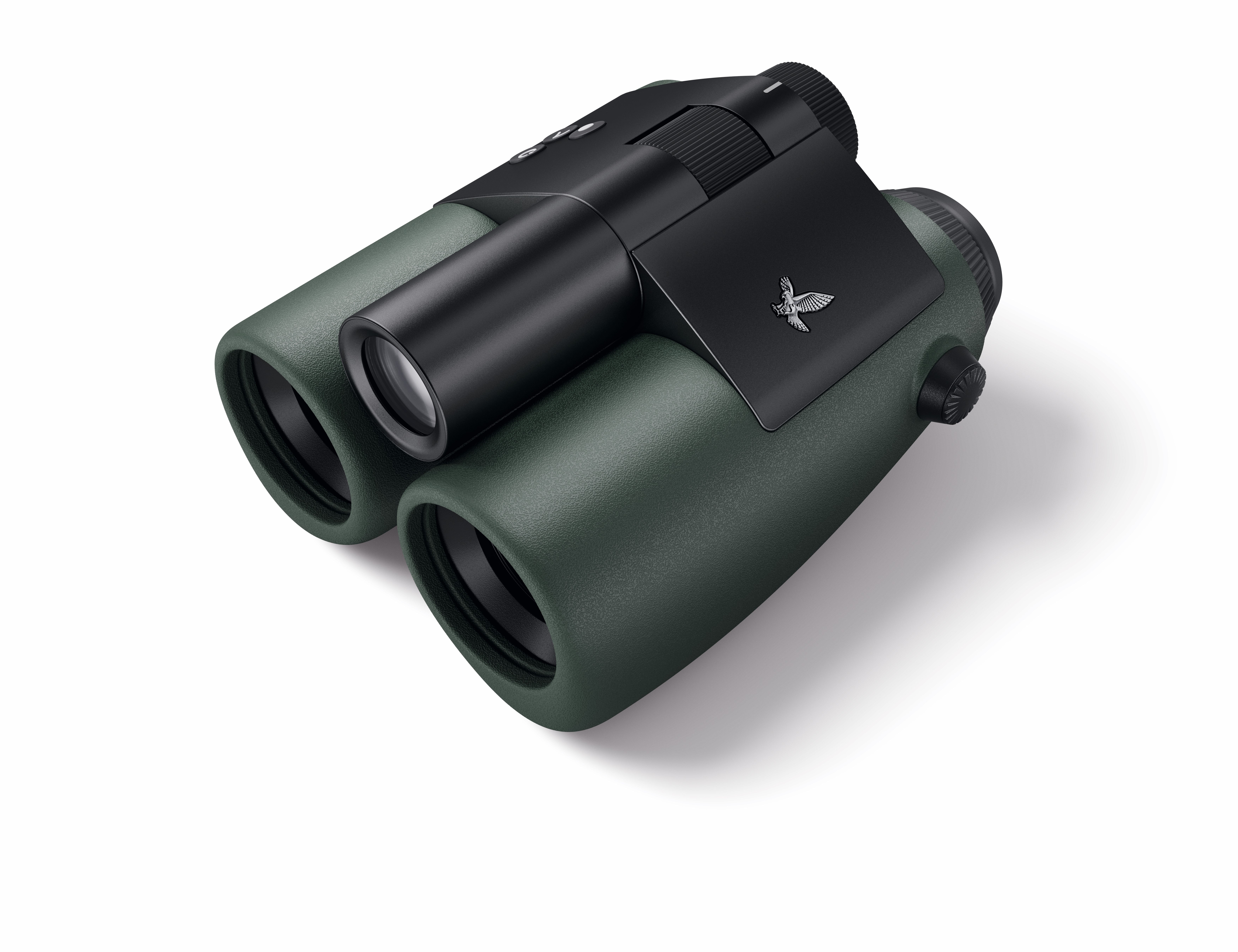The idea of putting a camera into a binocular to capture what you see goes back to the film era of the 1960's. Since the advent of digital photography, many companies have done so, with varying results. However, most prior attempts compromised either the camera or the binoculars, and usually both. Typically, you got a narrow field of view, distant close focus, poor ergonomics, and fuzzy, low-res pictures. I've never been tempted to buy one.
With continuing technological advancement, your cell phone likely has a much better camera than any recent binocular-camera device. But Swarovski's AX Visio is unlike any previous binocular/camera device. It's a binocular, and no entry-level glass either, but a classic EL 10x32. A 10x32 is among the least popular binocular configurations; my first thought was why not an 8x42? As soon as I had the AX Visio in my hands, I knew the most important reason: an AX Visio 8x42 would likely exceed three and a half pounds and be too large for non-Hagrid-sized people to hold. The 10x32 was selected for the AX Visio for its longer reach than an 8x, and more light gathering than 25 to 30 mm compacts. The 13 MP camera matches better smart phones and is paired with a fixed f/2.2 telephoto. To maximize chances for a sharp photo, the longest exposure time is 1/125 second. Add in that camera between the two barrels, a battery, Bluetooth, WiFi, a minicomputer, and the image display and it tops 38 ounces. To be fair, there are a number of binoculars on the market that are heavier than the AX Visio and are "just" binoculars. I am happy to say that despite being no featherweight, the Visio is ergonomically designed, and with Swarovski's FieldPro strap I comfortably used it for the equivalent of a full-day's birding. Some might prefer a harness.

A specially developed version of Merlin Bird ID is resident on the AX Visio. It contains over 9,000 species, including about 8,000 bird species from around the word, butterflies and dragonflies of Europe, and mammals of Europe and North America.
Once you've installed the required free app, photos and videos will automatically be sent to your cell phone, by WiFi or Bluetooth. With a "resident" program and Bluetooth connection, you can identify birds and take and transfer photos whether you're in New York's Central Park with a 5G connection or in West Virginia's Canaan Valley or the Pantanal in Brazil with no cellular connection at all.

How well does the AX Visio do at photography, and how about bird identification? The AX Visio will not replace your DSLR or Micro 4/3s camera and long telephoto lens. But if you're close enough and in good light, it can take surprisingly good photos. It can also correctly identify some remarkably bad photos, but it can make mistakes.

Here's how it all works. There are three buttons, easily accessed with your right index finger: on/off, menu, and shutter. When you partially depress the photo button, the auto focus starts; select one of two circle sizes depending on how large the animal is in the viewfinder. Four quarters of a circle appear in red, and each section becomes bolder as size and sharpness improve. The more parts of the circle are bold, the greater confidence you'll have in the ID.
I got correct identifications of some rather off-hand flight shots of American White Pelican and only-there-for-12-seconds fly-by Black-bellied Whistling Ducks, silhouetted Mourning Doves (in a location with seven species of pigeons and doves), and backlit House Sparrows. Ruddy Turnstones and Great-tailed Grackles, White-winged Doves and Laughing Gulls, and many other species presented no problems.
On the other hand, an uncooperative Great Egret at 250' - actively feeding in a marsh and often presenting only its back - had misidentifications from Trumpeter Swan to Snow Goose to Cattle Egret to Barn Owl. To be fair, I've always excelled at photos of trailing edges of wings, a tail just before it vanishes under water, and the proverbial quivering branch. I eventually got a good enough shot (long neck and yellow bill) for a correct ID, and even a beginner would discard the obvious initial errors. Understanding how the photo ID process works, within the limitations of the system, helps you develop a clear understanding of the level of confidence you should have in each ID. The system "knows" where you are, which can influence, but not override, the photo ID process.
Photos and videos are automatically sent to your phone, but the AX Visio can hold up to 1,700 photos or one hour of video.
There have already been many reactions to the AX Visio, some more valid than others. "It's too expensive!" Yes, it is expensive, but Swarovski is among the "European Triumvirate" of top-shelf optics companies. Tickets to a Taylor Swift concert are also expensive but, meaning no disrespect, I'd just pass them on to my middle daughter. The AX Visio costs less than a Swarovski ATX 95 mm scope kit; some birders will find greater value in the former and others in the latter.
One complaint heard even before the AX Visio launched, is that "Joe will never learn to identify birds but will be forever dependent on this piece of technology". I'm not convinced of that; it's still just another learning tool. I started birding in a 100% analog world, with a field guide in my belt, bird songs on a 33 1/3 LP record (unhelpfully back at home), and for several years, no experienced mentor to consult. My learning accelerated when I joined a bird club and started birding with folks with decades of experience.
Like so many before and since, I put in thousands of hours of field time to become an accomplished birder (at least, I can tell a hawk from a handsaw). There is satisfaction in such a learning curve, but that doesn't mean I believe new birders must follow an old course. Field guides have continually improved; recordings went from LP to cassette to CD to Merlin on your cell phone. You can take a bird study course on your laptop. When you're out in the field, having a digital field guide with recordings and access to eBird is a real help. Though I was slow in switching to digital technology for birding, I now eBird and digiscope every week. It's great that new tools can accelerate the learning curve for new birders!
I've also heard the opposite argument against this technology: the birder who's been birding 30+ years knows every bird they see through the AX Visio. OK that's valid! At least, when on their home turf. Drop someone in Chile, Uganda or Nepal, and they might not know any more than what family the bird belongs in. If you're a traveling birder, or a birder who travels, an AX Visio could be more than worth its weight in field guides.
One of the best features of the AX Visio lets you lock onto a stationary target with the press of a button, hand the AX Visio to the person next to you, and arrows will direct them right to the target! It solves the eternal challenge of getting another birder onto a well-hidden bird on an obscure perch.
Finally, we get to what could be the Visio's greatest strength: the future. Swarovski is actively reaching out to third party developers for additional apps. Do not just think about the other 3,000 bird species with insufficient photographs for initial inclusion. For starters, Odes & Leps (shorthand for Dragonflies & Damselflies, and Butterflies & Skippers) of North America; then Central America, and beyond. Reptiles and amphibians, wildflowers, trees and shrubs, mosses and lichens, and, for those so inclined, planes, trains and automobiles.
We have received our first AX Visio, and before the end of January should have a demo set up so that you can stop in and try out all the features for yourself. A rental program is also under consideration; stay tuned!
